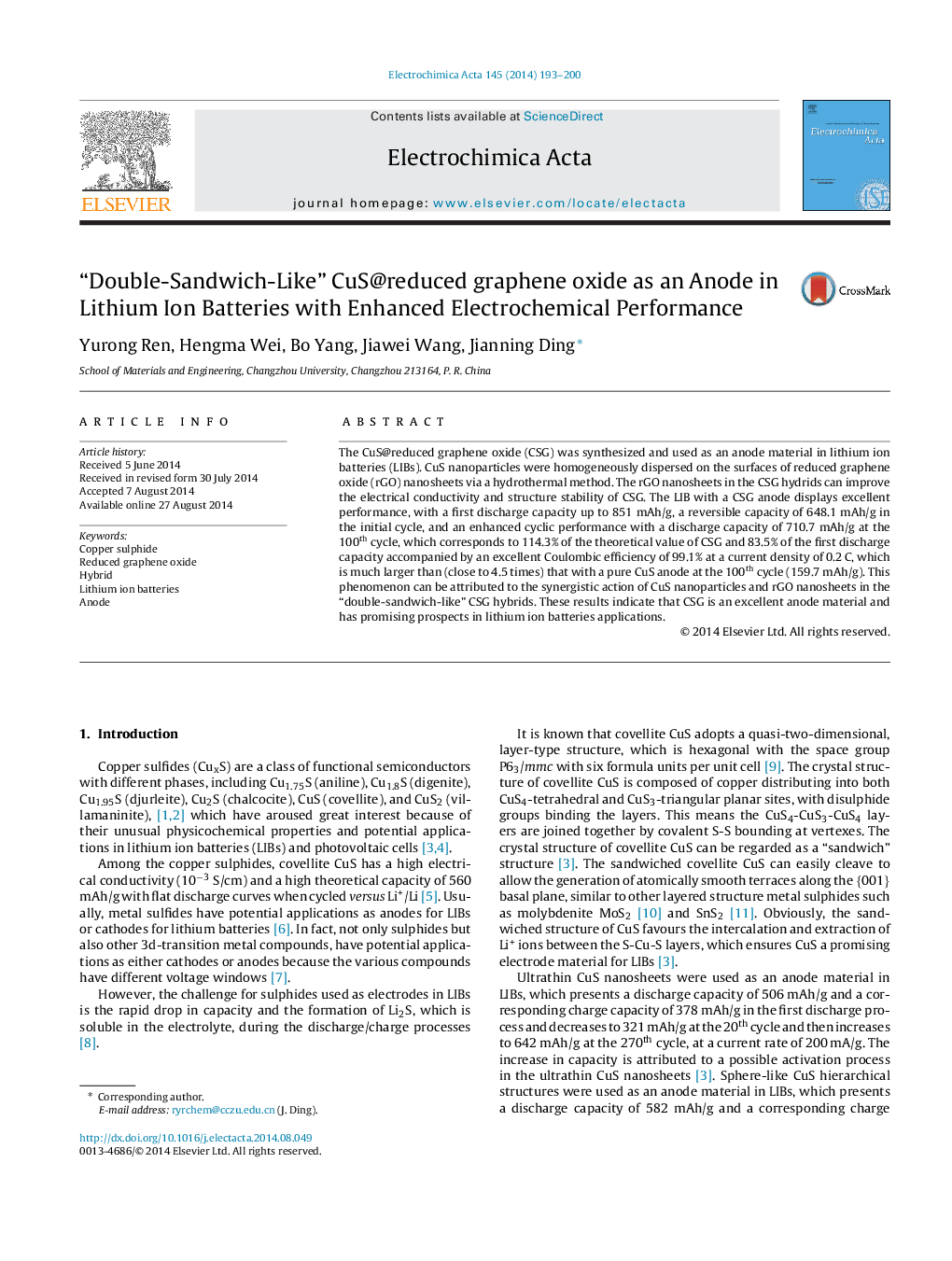| Article ID | Journal | Published Year | Pages | File Type |
|---|---|---|---|---|
| 185005 | Electrochimica Acta | 2014 | 8 Pages |
The CuS@reduced graphene oxide (CSG) was synthesized and used as an anode material in lithium ion batteries (LIBs). CuS nanoparticles were homogeneously dispersed on the surfaces of reduced graphene oxide (rGO) nanosheets via a hydrothermal method. The rGO nanosheets in the CSG hydrids can improve the electrical conductivity and structure stability of CSG. The LIB with a CSG anode displays excellent performance, with a first discharge capacity up to 851 mAh/g, a reversible capacity of 648.1 mAh/g in the initial cycle, and an enhanced cyclic performance with a discharge capacity of 710.7 mAh/g at the 100th cycle, which corresponds to 114.3% of the theoretical value of CSG and 83.5% of the first discharge capacity accompanied by an excellent Coulombic efficiency of 99.1% at a current density of 0.2 C, which is much larger than (close to 4.5 times) that with a pure CuS anode at the 100th cycle (159.7 mAh/g). This phenomenon can be attributed to the synergistic action of CuS nanoparticles and rGO nanosheets in the “double-sandwich-like” CSG hybrids. These results indicate that CSG is an excellent anode material and has promising prospects in lithium ion batteries applications.
Graphical abstractCuS@reduced graphene oxide displays excellent electrochemical behavior as an anode material for Lithium ion batteries.Figure optionsDownload full-size imageDownload as PowerPoint slide
